19 Types of Lawn Mowers for Every Yard & Style
Author: Chris Miller | Editor: Omar Alonso
Review & Research: Jen Worst & Chris Miller
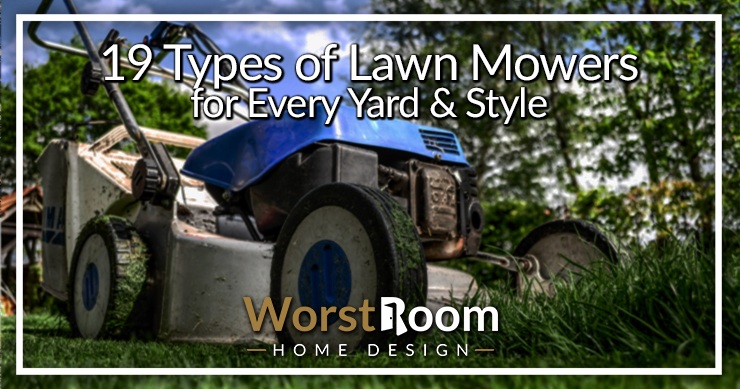
If you dream of having a lush, well-manicured lawn like that one neighbor, wishful thinking isn't going to help you achieve this — a one of the trusty types of lawn mowers will!
A good lawn mower that suits the size of your yard and type of grass (and of course, your budget) can work wonders for your lawn.
However, given the different types of lawn mowers out there, it may be overwhelming to even attempt picking out the right one, whether you’re new to the lawn game or are a seasoned veteran.
19 Types of Lawn Mowers
To make things easier and have a lawn that becomes the talk of the town, here’s a guide on the different kinds of lawn mowers you should consider.
Ride-On Mowers
Ride-on mowers can be quite convenient, especially if you have a large lawn or those lazy Sunday mornings when you’re not inclined to spend an hour on your feet.
With ride-on mowers, as the name says, you can be seated in the mower and drive it as you would a car, making mowing a significantly more enjoyable-yet-efficient process!
Despite their high prices, ride-on mowers are generally deemed better than walk-along mowers.
Lawn Tractors
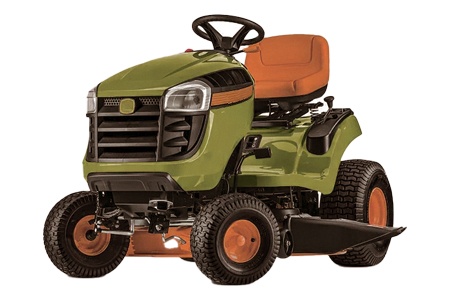
Lawn tractors are a type of ride-on mower, with front-mounted engines and deck widths generally ranging from 42-54 inches. These are the most commonly bought and used types of ride-on mowers and are a great choice for large lawns thanks to their deck widths.
Lawn tractors come in various sizes and shapes, with different features, cylinder numbers, horsepower, gear transmission and so on.
While they’re great for large lawns, you’ll spend anywhere between $1,000 and $3,000 to get yourself a decent lawn mower; additionally, they’re not very easily maneuverable, difficult to turn easily and tackle those tight edges and spots. These are the kinds of lawn mowers you see people storing outside under a tarp all the time.
Zero-Turn Mowers
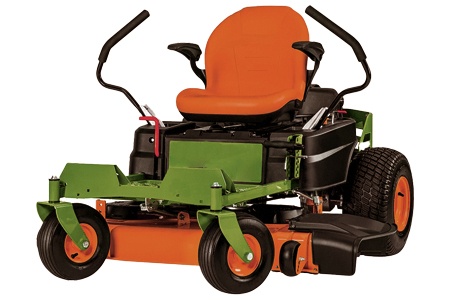
Another member of the ride-on mowers family, zero-turn mowers are controlled by lap bars in the front seat that operate dual hydrostatic transmissions at the rear wheels.
What this means, in more understandable language for some of us, is that these mowers, with their unique designs, can give you unparalleled maneuverability!
Dubbed the ‘Ferraris of the Lawn Mowing World’, these mowers make quick work of sharp turns, pivots, tight edges and spots, able to get closer to obstacles and cut more tightly than other ride-on mowers.
Ergo, a better finish on your lawn. This maneuverability also makes them a superb choice for irregularly-shaped lawns. Zero-turn lawns are the easiest-to-handle mowers out there, as well as the fastest. When determining what size of zero-turn mower to invest in, consider the size of your lawn, terrain complexity, and your desired level of maneuverability.
Many of these types of lawn mowers include standing pads on wheels behind the mower that the rider stands on rather than sitting. This offers a better vantage point and easier control at higher speeds.
Articulating Lawn Mowers
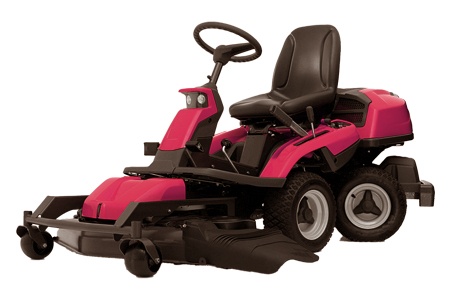
These are very similar to zero-turn radius mowers but the blade deck is at the very front of the mower. Behind that seats the rider so he or she can see directly down to where the deck is being guided, and behind the rider is the engine.
These tend to be longer mowers in order to give the rider this vantage point. It offers all of the benefits of a zero-turn mower in terms of accuracy (but without the zero-turn power). It's a much easier to control type than the other lawn mower types that offer similar features.
Rear-Engine Riding Mowers
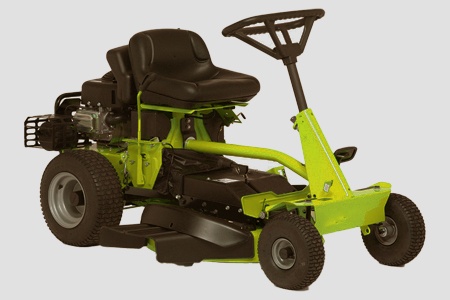
Rear-engine riding mowers also belong to the ride-on mowers family (as the name suggests) and are a good choice for moderately-sized lawns—you know, the ones that are too big for walk-along mowers but too small for lawn tractors.
These lawn mower types have engines at the rear under the driver’s seat, with the deck under the driver’s position, and are controlled with a hand lever that operates the continuously variable transmission and single-cylinder engines.
Rear-engine riding mowers generally have deck sizes ranging from 30-33 inches, which makes them best suited for lawns below 2.5 acres in size, able to sustain the stamina that such lawns need.
Walk-Along Mowers
Walk-along mowers are lawn mower types that require driving, but by the user walking behind them. Due to the effort these mowers require, they’re best kept aside for small lawns that are no more than half an acre in size and owners who don’t mind the exercise this entails.
Walk-along mowers are versatile and come in more variations than ride-on mowers, with qualities and features for every budget.
Cylinder / Reel Mowers
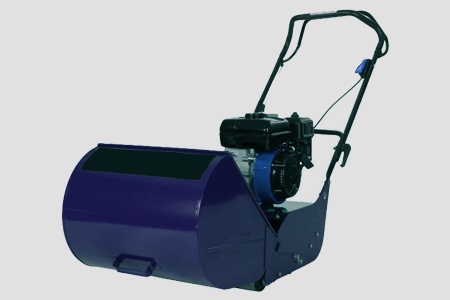
Cylinder mowers feature cylindrical blades that rotate vertically (anywhere between 3 to 12 blades), slicing against a fixed blade, at the front of the mower.
These blades trap the grass between them and slice them, similar to how scissors work. These mowers are best for flat lawns, finding rough or uneven terrain Herculean to handle.
Cylinder types of lawn mowers give you neat cuts and specialize in creating defined stripes. They’re most efficient with soft, short grasses.
This also means that you can’t let the grass grow too long as your mower can’t handle it, and therefore, will have to mow your lawn frequently (at least once or twice a week).
In addition to all their other shortcomings, these mowers are also notoriously high maintenance, requiring regular servicing and less adjustable than other mowers.
You may also struggle to find replacement parts due to their relative rarity. However, their affordability and efficiency cannot be faulted.
Rotary Mowers
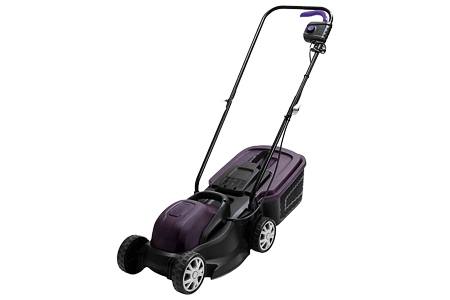
Easily the most common walk-along mowers, rotary mowers feature single blades that rotate horizontally at extremely high speeds—similar to how blenders and food processors work.
Rotary mowers are best for lawns with medium or long grass, so it’s okay to go those two weeks without mowing.
These are different kinds of lawn mowers that appeal to those that don't want to deal with engines and gas and all these other demands. It's the type of person that might have a chamomile lawn, and this would work great for that.
Rotary mowers are not as precise as cylinder bowers, resulting in more inaccurate and uneven cuts. However, this inaccuracy and unevenness may only be visible to the very trained eye, especially on the average, uneven lawn with its slopes and bumps.
Push Mowers

Push mowers require you to manually push them from behind—there’s no other way to get the wheels going.
These mowers are extremely popular though, aided by their cheap prices and lightweight, easy-to-handle nature that results in good maneuverability, letting users steer easily around corners and obstacles and even reverse.
Naturally, these mowers require physical exertion, so invest in these only if you like your dose of morning exercise/have no health complaints. They’re also best suited for small, level lawns—you don’t want to chase them down a hill or push them up a hill.
Additionally, since these mowers don’t produce any emissions and run on manual power, they’re supremely environmentally friendly; they’re also noise-pollution free, unlike powered lawnmowers.
They all come with bags too, which allow you to collect the grass clippings rather than leaving them on the lawn, if you'd rather not. The next question becomes what to do with them, but don't worry, we've written about how to dispose of grass clippings.
Self-Propelled Mowers
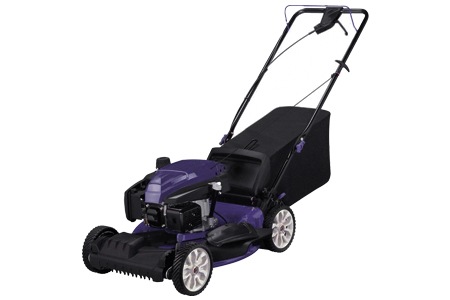
Self-propelled lawn mowers are propelled forward by a transmission, so unlike the push mower, you don’t need to push it—only guide it. Self-propelled mowers are typically easy to operate and make quick work of mowing the lawn, small or big.
Their main selling point is that these mowers don’t require manpower to push them forward, in addition to being more consistent and constant in speed than push mowers. However, these require regular maintenance and can carry quite a high price tag.
Hover Mowers
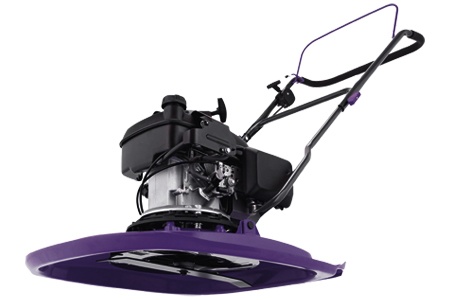
Hover mowers hover above the ground thanks to a cushion of air that keeps them suspended. These mowers are super easy to guide around due to the reduced contact with the ground and the resulting reduced friction.
You can easily move these in any direction, sideways included, making them great for busy, irregularly-shaped lawns. These are super unique types of lawn mowers.
Hover mowers, in addition to being easy to control, are also inexpensive. However, typically electric powered, they lack the power that other mowers are capable of, making them unsuited for larger lawns.
Electric-Powered Mowers
Mowers can also be distinguished based on their power source. As the name suggests, electric-powered mowers run on electricity instead of gas or batteries. These are typically corded and are easily the most popular and common kinds of lawn mowers for small and medium-sized yards.
Electric mowers are also generally lightweight, easy to handle and maneuverable. They are also smaller than gas-fired mowers, and therefore, easy to store.
They’re also super affordable. However, their biggest drawback is that they’re attached to a cord, which means that your maneuverability is limited to the length of your wire.
Gas-Powered Mowers
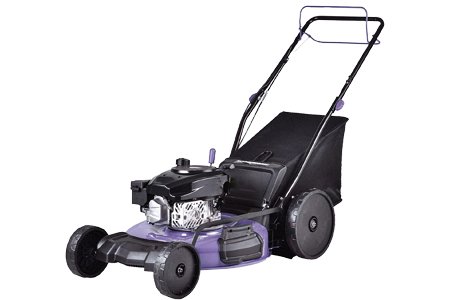
Gas-powered lawn mowers run on petrol and therefore, can reach areas that corded mowers can’t. They are also more powerful, cut grass faster, and in general, get the job done faster.
Their power means that they’re also capable of cutting through thick, tall or dense grass. These mowers are also easy to maneuver, despite being heavy and large.
However, these mowers are extremely polluting and require regular maintenance and servicing. They’re also very noisy and are among the most expensive walk mowers available, ranging between $200 and $800.
Battery-Powered Mowers
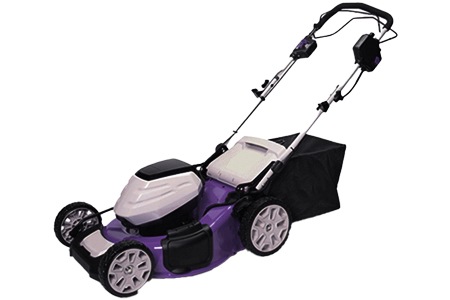
Battery-powered mowers run on batteries, typically lithium-ion, that are lightweight and last long. These give you all the efficiency of electric mowers minus the cable-length hindrance. This means better maneuverability and more convenience and suited to all lawn sizes.
However, these are quite expensive, costing upward of $500 for a good model. Another drawback is the limited run time, generally lasting an hour before they need to be charged.
You’ll also need to keep an eye on the battery and replace it as and when necessary (generally every few years).
Manual Powered Mowers
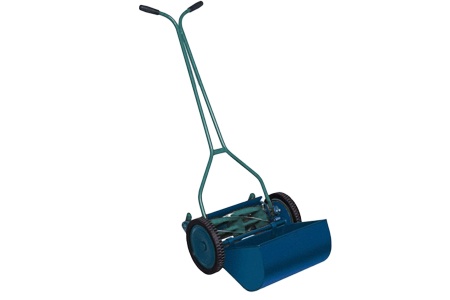
Manual powered mowers are much like rotary push mowers but may have an engine that spins the blades, but doesn't help propel the mower forward. You have to use your own muscle power while walking behind it.
Electric Powered Mower
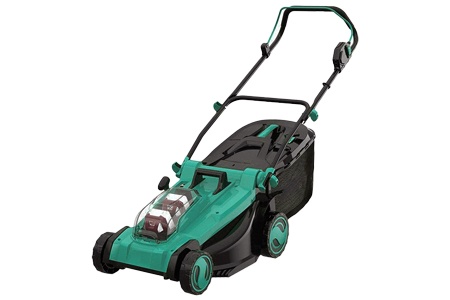
These lawn mower types are basically identical to push mowers except they feature really long cables so you can connect them to an extension cord and power outlet.
They tend to be smaller than gas-powered push mowers and you don't have to worry about having fuel on hand or running out in the middle of the job. They tend to be less expensive and require a bit less maintenance.
Of course, you need to make sure that you never run over your power cable. Also you have to take care that it's not getting tangled and wrapped around trees, etc.
Rough-Cut Mowers
You can think of these as industrial types of lawn mowers. They come with very sturdy, heavy blades that can cut down brush and even small trees sometimes. They're made to let you keep moving without too much concern about what's in front of you.
They're called rough-cut mowers because they aren't made to create nice, polished lawns. They're made to get a lot of work done fast.
Sickle Bar Mower
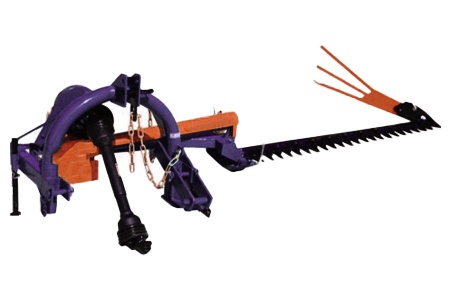
Typically you walk behind these mowers, which feature two wheels and an engine behind them to act as a counterweight to the blades at the front. The blades are situated at the front within a very wide, horizontal bar.
This bar has a reciprocating sickle with blades in the shape of a triangle. It works like hair clippers, actually. That's a great way to explain it. A second set of blades constantly moves left-to-right to create a bunch of scissor-cutting sections.
Flail Mower
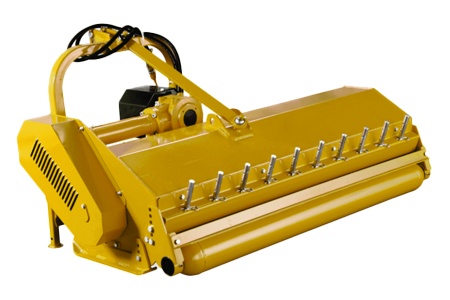
Flail mowers are designed for brush that you know doesn't have overly thick branches and trunks within it. Many of these attach to the back of a tractor though there are walk-behind options.
Part of the reason they're called "flail" mowers is because they don't throw objects around taht they can't cut. They simply bounce off of them and keep moving. This makes it safe to cut through tall brush that you can't see through.
Bush Hog Mower
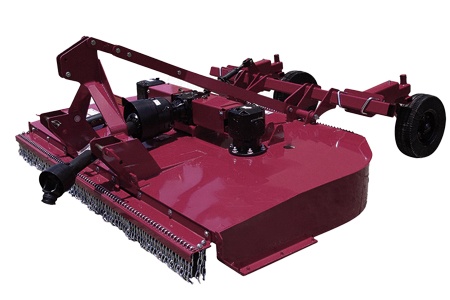
A bush hog, or brush hog, is a rotary mower that is typically pulled behind a tractor, because they're extremely heavy due to their expansive width. These are designed to chew through even thick branches and trunks of heavy brush.
Small trees, saplings, broken branches on the ground, grass, and brush... nothing will withstand the power of these. Their width helps get large jobs done much more quickly because you need fewer passes along the field.
Different Types of Lawn Mowers
Finally there's a few different types of lawn mowers that don't fit into the previous categories. These are fun but not really as useful as they might seem.
Remote Control Lawn Mowers
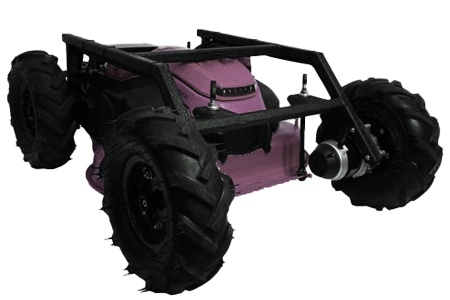
These silly mowers allow you to control them from a remote control, like driving an RC toy car or playing a video game. They come in all sizes, but the point remains the same. You can sit on your front porch or back porch and drive the mower from a distance.
The practicality isn't really here when you can achieve the same effect by sitting on a riding mower or tractor, even inside an air conditioned cabin with a radio or TV. Consider these pointless.
Robotic Lawn Mowers
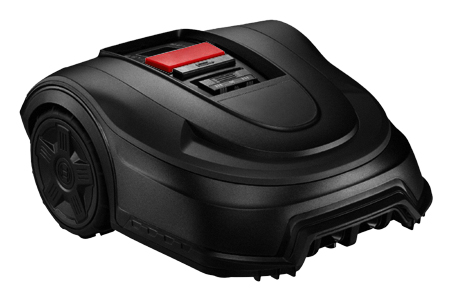
These are similar to the type above, except you don't even have to drive them. Much like the Roomba vacuum cleaners that can detect the shape of your flooring area to automatically vacuum, these do the same with your lawn.
You have to create a boundary for them, sometimes just a wire, or train them with GPS coordinates. Beyond that, they run around the yard themselves, detecting if they've cut the lawn in this area or not, and continue running until they're finished.
These lawn mower types are another pointless invention so far. The technology has a long way to go before they're worth the hassle.
Tow-Behind Mowers
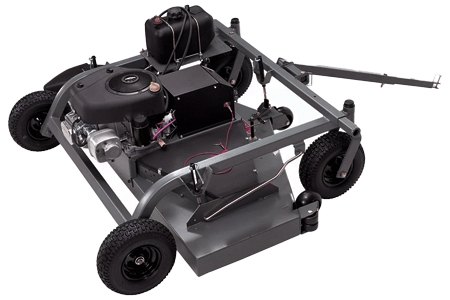
Finally, we should mention tow-behind lawn mowers. These feature their own engine to spin the blades, and essentially they're just an engine on top of the blade deck, with two wheels.
They're designed to be pulled behind a 4-wheeler, tractor, or whatever type of ATV you may have. These are great if you don't want a full blown tractor because you already have other vehicles capable of pulling the tow-behind mower.
Types of Lawn Mowers for Every Yard
Mowers can also be distinguished based on the type of drive—front-wheel, rear-wheel, or all-wheel drives. Front-wheel drive mowers are pushed forward by the action of the front wheels, rear-wheel mowers by the rear wheels, and all-wheel mowers by all 4 wheels!
Mowers come in many shapes, sizes and types, and are often distinguished based on the type of drive, whether they’re ride on or walk along, and what their power source is.
Therefore, don’t let the many categories frazzle you—choose one factor based on which you want to distinguish a mower. Many of these categorizations overlap, too.
The next time you’re looking to buy any of the types of lawn mowers, don’t let it overwhelm you. Keep our guide handy and you’ll be golden!



